
The Haunting Legacy of the Genocide Museum
Explore the poignant history of Cambodia at the Genocide Museum, a powerful tribute to resilience and remembrance amidst tragedy.
A visit to the Genocide Museum in Phnom Penh is a profound experience that offers a deep insight into Cambodia's tragic history. This museum stands as a poignant reminder of the atrocities committed during the Khmer Rouge regime, providing a space for reflection, learning, and remembrance.
A brief summary to Genocide museum
- FWM2+PFX, street Boeng Cheung ek, Phnom Penh, Khan Dangkor, KH
Local tips
- Plan your visit during the week to avoid larger crowds, allowing for a more personal experience.
- Consider hiring a local guide to gain deeper insights and personal stories related to the exhibits.
- Allocate at least two hours for your visit to fully absorb the exhibits and reflect on the experience.
- Be respectful during your visit; this is a site of great tragedy and remembrance.
- Check for any special exhibits or events that may be happening during your visit for an enriched experience.
Getting There
-
Walking
If you are in the center of Phnom Penh, start at the Independence Monument located at the intersection of Norodom Boulevard and Sihanouk Boulevard. From there, head south on Norodom Boulevard until you reach the roundabout. Continue straight onto Street 63 and follow it to its end. Turn left onto Street 271, then take a right onto Street 2004. You will see the Genocide Museum (FWM2+PFX, Street Boeng Cheung Ek) at the end of the road.
-
Tuk-Tuk
If you're looking for a quicker option, you can hire a tuk-tuk from any point in the city. Just tell the driver you want to go to the Genocide Museum located at FWM2+PFX, Street Boeng Cheung Ek. Most drivers will know the location, but it’s a good idea to confirm the address before you start your journey. The ride will typically take around 15-20 minutes depending on traffic.
-
Bicycle
For those who prefer cycling, rent a bicycle from one of the many rental shops in the city. Start at Koh Pich (Diamond Island) and head towards the main road, taking Street 2004. Follow this road directly to the Genocide Museum (FWM2+PFX, Street Boeng Cheung Ek). The ride will take approximately 30 minutes, and you'll enjoy the sights along the way.
-
Public Bus
You can take a public bus to reach the Genocide Museum. Look for Bus Line 5, which heads towards Khan Dangkor. Board the bus at any central bus stop and ride until you reach the stop near the museum. From the bus stop, walk a short distance to the museum located at FWM2+PFX, Street Boeng Cheung Ek. Check local schedules for the most accurate timing.
Discover more about Genocide museum
Iconic landmarks you can’t miss
Passport Office
6.1 km
Effortlessly manage your passport needs at the Passport Office in Phnom Penh - your gateway to hassle-free travel.

Kmeng Land
6.4 km
Experience joy and excitement at Kmeng Land, Phnom Penh's premier indoor playground for families and kids of all ages.

Tuol Tompoung Market
6.4 km
Discover the bustling Tuol Tompoung Market, where vibrant culture meets delicious street food and unique shopping in the heart of Phnom Penh.

Toul Tom Poung EVENING market
6.5 km
Discover the authentic tastes of Cambodia at Toul Tom Poung Evening Market, a bustling hub of fresh food and vibrant local culture in Phnom Penh.

Wat Maniratanaram Tuol Tumpung
6.7 km
Explore the spiritual essence of Cambodia at Wat Maniratanaram Tuol Tumpung, a captivating Buddhist temple and pagoda in the heart of Phnom Penh.
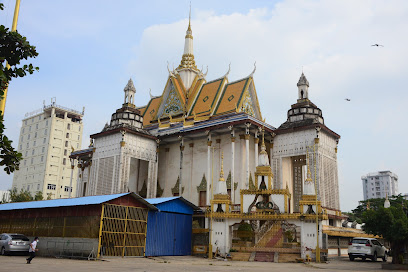
TESOL House
7.0 km
Explore TESOL House in Phnom Penh: Your gateway to mastering English teaching and immersing in Cambodian culture.

ផ្សាររន្ទេះបាញ់ Chomka morn
7.1 km
Experience the vibrant culture of Phnom Penh at Chomka Morn Market, where local flavors and crafts come alive in a bustling atmosphere.

WH Chamkarmorn Residence
7.3 km
Discover the ideal blend of comfort and local charm at WH Chamkarmorn Residence, your perfect home base in Phnom Penh.
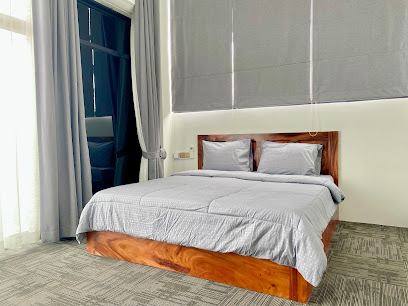
Hiko Teppanyaki Noro Mall Branch
7.7 km
Experience the art of Japanese teppanyaki at Hiko Teppanyaki Noro Mall Branch, where culinary skills meet delightful flavors in Phnom Penh's vibrant dining scene.

Prey Veng Pagoda
7.7 km
Explore Prey Veng Pagoda in Phnom Penh, a serene haven of spirituality showcasing Cambodia's rich Buddhist heritage and stunning architecture.
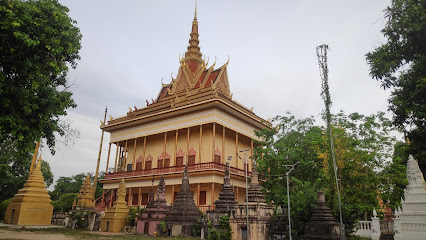
Amazing Cambodia
7.9 km
Explore Amazing Cambodia for unique souvenirs and local art that capture the essence of Cambodia's rich culture and tradition.
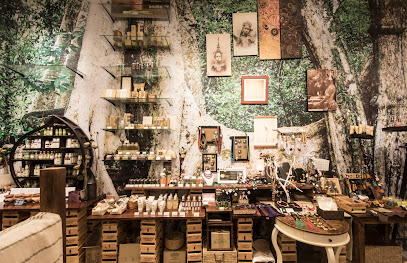
WCS Cambodia
8.1 km
Explore WCS Cambodia, a key player in wildlife conservation, and learn how to support sustainable practices in this biodiversity hotspot.

Moha Mongkul Sen Sok Center
8.2 km
Discover the elegance of Moha Mongkul Sen Sok Center, a premier wedding venue in Phnom Penh known for its exquisite decor and memorable celebrations.

Malis Norodom
8.2 km
Discover the exquisite flavors of Cambodian cuisine in a fine dining setting at Malis Norodom, Phnom Penh's culinary gem.

Phnom Penh Cambodia
8.2 km
Experience the perfect blend of modern urban living and rich cultural heritage in Phnom Penh's dynamic condominium complexes.

Unmissable attractions to see
Choeung Ek Genocidal Center
0.0 km
Discover the poignant history of Cambodia at Choeung Ek Genocidal Center, a memorial site dedicated to the victims of the Khmer Rouge regime.

People Night Market
4.1 km
Experience the vibrant culture, delicious street food, and unique shopping at People Night Market in Phnom Penh, a must-visit for every traveler.

San Tai Zi 三太子
5.1 km
Explore San Tai Zi in Krong Ta Khmau, where culture and nature intertwine, offering travelers an authentic Cambodian experience filled with beauty and tradition.

Kingdomcity Cambodia
5.3 km
Explore the vibrant spiritual community of Kingdomcity Cambodia, where faith meets culture in the heart of Phnom Penh.
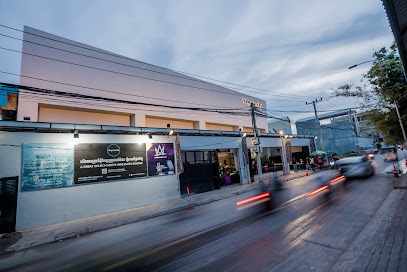
Takhmao Riverside Park
5.3 km
Experience the natural beauty and vibrant atmosphere of Takhmao Riverside Park, a tranquil escape with recreational activities and authentic Cambodian cuisine.

Pagoda Bouddhisme
5.8 km
Experience the spiritual essence and architectural beauty of Pagoda Bouddhisme, a serene Buddhist temple in the heart of Phnom Penh.

Basak Western Circle Garden
6.4 km
Experience tranquility at Basak Western Circle Garden in Krong Ta Khmau, a perfect blend of nature, relaxation, and local culture.

Russian Market / ផ្សារទួលទំពូង
6.4 km
Discover the bustling Russian Market in Phnom Penh, a vibrant hub of local culture, shopping, and authentic culinary delights.

PH Euro Park WATERFALL
6.8 km
Experience tranquility at PH Euro Park WATERFALL in Phnom Penh, a perfect oasis for nature lovers and a picturesque escape from the city hustle.

PH Euro Park
6.9 km
Explore the serenity of PH Euro Park, a vibrant urban park in Phnom Penh perfect for relaxation, recreation, and memorable family outings.

Thánh Thất Cao Đài Tây Ninh Tại Phnompenh
7.3 km
Explore the exquisite architecture and spiritual depth of Thánh Thất Cao Đài, a unique religious institution in the heart of Phnom Penh, Cambodia.

Tuol Sleng Genocide Museum
7.4 km
Explore the haunting history of Cambodia at Tuol Sleng Genocide Museum, a powerful tribute to resilience and remembrance in Phnom Penh.

Boeng Keng Kang Market
7.5 km
Experience the vibrant heart of Phnom Penh at Boeng Keng Kang Market, where local culture, fresh produce, and unique handicrafts await.

Wat Than
7.5 km
Experience the tranquility and cultural richness of Wat Than, a hidden Buddhist temple gem in the heart of Phnom Penh, Cambodia.

Koh Krobey Pagoda
7.6 km
Explore the tranquility and rich cultural heritage of Koh Krobey Pagoda, an exquisite Buddhist temple in Krong Ta Khmau, Cambodia.

Essential places to dine
Peajanak Restaurant
4.2 km
Explore authentic Cambodian flavors at Peajanak Restaurant in Krong Ta Khmau—where every dish tells a story.

De Burlap Cafe
5.4 km
Discover De Burlap Cafe in Krong Ta Khmau - where authentic Khmer flavors meet a cozy atmosphere for every traveler.
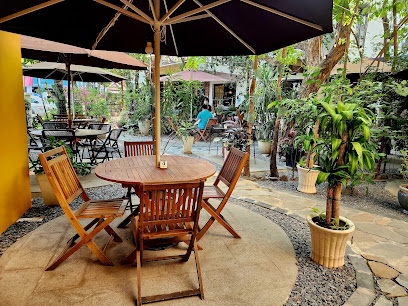
YAYA UDON Restaurante (ភោជនីយដ្ឋានខ្មែរ - ជប៉ុន)
5.6 km
Discover the perfect blend of Cambodian hospitality and Japanese culinary artistry at YAYA UDON Restaurante in Krong Ta Khmau.

Java Creative Cafe Toul Tom Poung
6.0 km
Experience culinary artistry at Java Creative Cafe in Toul Tom Poung - where every meal is a masterpiece amidst inspiring local art.

Mangia
6.2 km
Experience authentic Cambodian cuisine at Mangia in Phnom Penh—where fresh ingredients meet traditional flavors.

Eleven One Kitchen
6.2 km
Experience authentic Cambodian flavors blended with international cuisine at Eleven One Kitchen in Phnom Penh.

Nhà hàng
6.2 km
Experience family-friendly dining in Phnom Penh with diverse dishes and an inviting atmosphere perfect for all ages.

Greek Souvlaki Restaurant
6.3 km
Experience authentic Greek flavors at the renowned Greek Souvlaki Restaurant in Phnom Penh—where every bite tells a story.

ភោជនីយដ្ឋានប្រូ(Blue Restaurant)
6.3 km
Discover the lively atmosphere at Blue Restaurant's beer garden in Krong Ta Khmau, where delightful food meets refreshing drinks.

1 Duck & Food (Toul Tum Poung)
6.3 km
Experience authentic Cambodian cuisine at 1 Duck & Food in Phnom Penh's Toul Tum Poung neighborhood, famous for its delicious duck dishes.

Golden Pumpkin Restaurant Phnom Penh
6.3 km
Experience the heart of Cambodia through authentic flavors at Golden Pumpkin Restaurant in Phnom Penh's vibrant Russian Market area.

Toul Tom Pong Seafood - Street Food
6.4 km
Experience authentic Cambodian street food at Toul Tom Pong Seafood in Phnom Penh – where fresh flavors meet vibrant culture.

The Ground Food Market
6.4 km
Explore the vibrant flavors of Asia at The Ground Food Market in Phnom Penh—a must-visit destination for every food enthusiast.

NESAT Seafood House
6.4 km
Discover NESAT Seafood House: A delightful culinary experience featuring fresh local seafood in the heart of Phnom Penh.

ខ្ចៅ
6.4 km
Experience authentic Cambodian cuisine at ខ្ចៅ in Phnom Penh – where tradition meets taste in every dish.

Markets, malls and hidden boutiques
ហាងលក់វត្ថុអនុស្សាវរីយ៌សម្រាប់ទទួលភ្ញៀវ Gift For Guest Shop
5.1 km
Explore unique souvenirs and local crafts at Gift For Guest Shop in Phnom Penh, a perfect stop for memorable gifts reflecting Cambodian culture.

Kanika Collection/ Anime & Kafé
5.9 km
Explore Kanika Collection/Anime & Kafé in Phnom Penh for a delightful mix of toys, collectibles, and a cozy café atmosphere perfect for all ages.

Heng ying shop
6.1 km
Explore Heng Ying Shop in Phnom Penh for unique second-hand belts, handbags, running gear, and shoes, celebrating sustainable fashion.

For Someone I Like
6.2 km
Discover unique gifts and local crafts at 'For Someone I Like' in Phnom Penh, where every purchase tells a story of Cambodian culture.

Decollec
6.2 km
Explore Decollec, a delightful gift shop in Phnom Penh offering unique local crafts and souvenirs that capture the spirit of Cambodia.

Lao Kang Tboung
6.3 km
Explore Lao Kang Tboung, Phnom Penh’s premier gift shop, for unique Cambodian handicrafts and souvenirs that capture the essence of local culture.
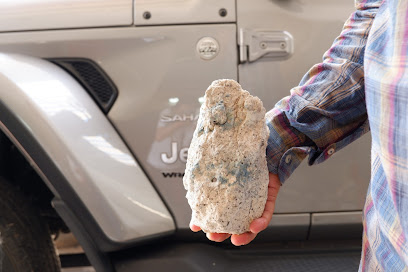
វត្ថុអនុស្សាវរីយ៍សំណាងល្អ - Good Luck Souvenirs
6.4 km
Uncover the essence of Cambodia with authentic keepsakes from Good Luck Souvenirs, where culture meets creativity in every handcrafted item.

Khmer Souvenirs KH
6.4 km
Explore the charm of Cambodian craftsmanship at Khmer Souvenirs KH, your go-to destination for unique and authentic souvenirs in Phnom Penh.
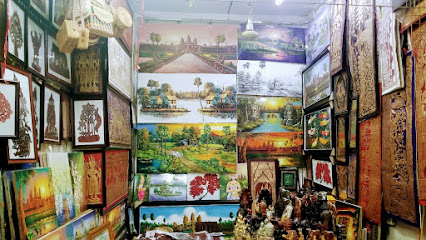
CT Cambodge
6.4 km
Explore CT Cambodge, Phnom Penh's premier souvenir shop, featuring unique Cambodian crafts, gifts, and textiles at wholesale prices.

Hong Kong Shop 3
6.6 km
Explore a vibrant gift shop in Phnom Penh filled with unique souvenirs and toys, capturing the spirit of Cambodia.

Khmer Store ONLINE 24 - Sale all kind of Products
6.8 km
Explore Khmer Store in Phnom Penh for unique clothing and footwear, showcasing the rich culture and craftsmanship of Cambodia.

1991 Store II
6.9 km
Explore the trendy 1991 Store II in Phnom Penh for unique fashion accessories that embody local culture and style.

DIY SHOP
7.1 km
Discover stylish shoes, belts, and luggage at DIY Shop, a unique shopping destination in the heart of Phnom Penh, perfect for all travelers.
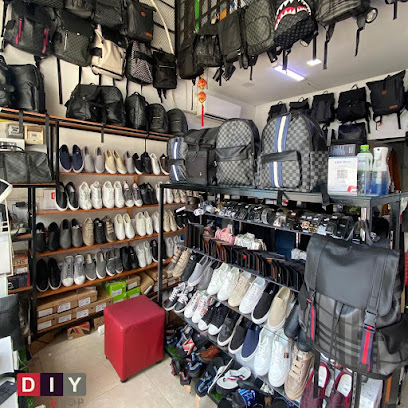
November Store
7.1 km
Explore unique handcrafted gifts and authentic Cambodian souvenirs at November Store in Phnom Penh, a must-visit for culture lovers and tourists alike.

M.Store.Cambodia
7.3 km
Discover unique Cambodian fashion at M.Store.Cambodia, where local artistry meets modern style in the heart of Phnom Penh.

Essential bars & hidden hideouts
Koh Loca Fun
5.3 km
Discover the vibrant nightlife of Phnom Penh at Koh Loca Fun, a lively bar known for its eclectic drinks and unforgettable atmosphere.

My Heart Coffee
5.3 km
Experience vibrant local culture at My Heart Coffee, a cozy pub with delightful drinks and lively karaoke in Takhmao.

SPRING CAFÉ & COCKTAIL
5.5 km
Discover the vibrant flavors of Cambodia at Spring Café & Cocktail, a perfect blend of local cuisine and refreshing drinks in Krong Ta Khmau.

Beer O`clock Bar
5.8 km
Experience Phnom Penh's nightlife at Beer O'Clock Bar, where local and international beers flow in a vibrant atmosphere.

Kombang PUB and Eatery
6.0 km
Discover the vibrant atmosphere and delightful flavors at Kombang PUB and Eatery, the perfect spot for a night out in Phnom Penh.

La Pétanque Bar & Kitchen
6.0 km
Discover La Pétanque Bar & Kitchen in Phnom Penh, where French culinary delights meet a lively bar scene in a cozy atmosphere.

Tipsy Tap
6.2 km
Discover the vibrant nightlife of Phnom Penh at Tipsy Tap, a lively bar offering a fantastic selection of drinks and a welcoming atmosphere.
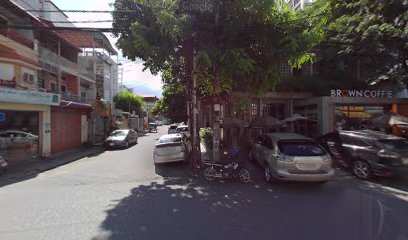
Teddy Bear Restaurant
6.2 km
Experience the cozy charm of Teddy Bear Restaurant in Phnom Penh, where delightful drinks and a friendly atmosphere await you.

The Cave
6.3 km
Experience the perfect blend of local and international cuisine at The Cave, Phnom Penh's charming bar and restaurant with a vibrant atmosphere.

The Black Sheep
6.3 km
Discover the vibrant nightlife of Phnom Penh at The Black Sheep, a trendy bar known for its exquisite cocktails and inviting atmosphere.

Hometown Hangout
6.3 km
Experience the vibrant nightlife of Phnom Penh at Hometown Hangout, a bar that offers live music and a welcoming atmosphere for all visitors.

Long After Dark
6.4 km
Discover the vibrant atmosphere of Long After Dark, Phnom Penh's favorite bar for craft cocktails and lively entertainment amidst the Russian Market.

FUNKY FESTI
6.4 km
Discover the lively atmosphere and eclectic menu at Funky Festi, a vibrant restaurant and cafe in the heart of Phnom Penh, perfect for tourists.

Sundown Social Club
6.5 km
Experience the vibrant nightlife at Sundown Social Club, a bar in Phnom Penh known for its creative cocktails and lively ambiance.

ASDA PUB
6.5 km
Discover the vibrant nightlife of Phnom Penh at ASDA PUB, where locals and travelers unite over great drinks and lively conversations.




